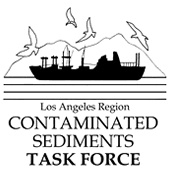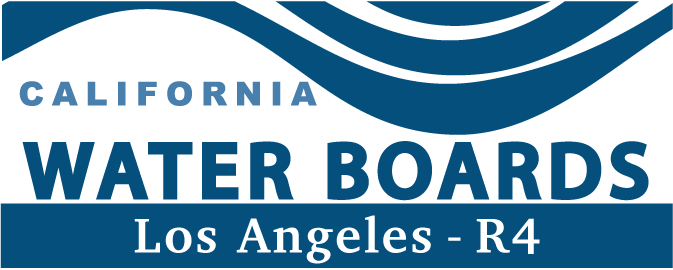Contaminated Sediments Task Force (CSTF)
Background
Los Angeles County includes two of the nation's largest commercial ports and several major marina complexes and small-vessel harbors. Periodic dredging is needed to maintain channels and berthing areas, and to expand and modernize ports and harbors. The dense human population and extensive urbanization of the Los Angeles area have led to the discharge of pollutants into our waterways from many sources. As a result, some of the bottom sediments dredged from coastal areas contain high concentrations of heavy metals, pesticides and other contaminants. Disposal of contaminated dredged material can be difficult, since it requires special management to prevent potential adverse ecological impacts and human health risks. On October 12, 1997, Governor Wilson signed SB 673, authored by Senator Karnette of Long Beach, into law. This legislation requires the Los Angeles Regional Water Quality Control Board and the California Coastal Commission to establish a multi-agency Contaminated Sediments Task Force. It also requires the Regional Board and the Coastal Commission to actively participate in the Task Force and assist in the preparation of a long-term management plan for dredging and disposal of contaminated sediments from coastal waters of the Los Angeles Region. The management plan will consider aquatic and upland disposal alternatives, treatment, beneficial re-use and other management techniques. Additionally, the plan will include a component focused on the reduction of contaminants at their sources. This long-term management plan must be submitted to the legislature by January 1, 2003.
CSTF Participants
The Task Force includes representatives from the U.S. Army Corps of Engineers, U.S. Environmental Protection Agency, California Coastal Commission, Los Angeles Regional Water Quality Control Board, California Department of Fish and Game, Port of Long Beach, Port of Los Angeles, City of Long Beach, Los Angeles County Beaches and Harbors, Heal the Bay, and other interested parties.
CSTF Activities
- The Executive Committee of the Task Force consists of the heads of the four regulatory agencies responsible for managing dredging activities (Army Corps of Engineers, EPA, Regional Board, Coastal Commission). The Executive Committee meets once or twice a year to review policy decisions and assess the overall progress of the Task Force. ·
- The Management Committee is the main evaluation and decision-making body for the Task Force. The Management Committee holds regular meetings, generally every month or two. ·
- The Task Force created five Strategy Development Committees to prepare specific parts of the long-term management plan. These committees meet frequently (often monthly) to discuss technical issues related to development of the management plan. The five committees are the Upland Disposal and Beneficial Re-Use Committee, the Aquatic Disposal and Dredge Operations Committee, the Watershed Management and Source Reduction Committee, the Implementation Committee, and the Sediment Thresholds Committee. ·
- The Task Force created an Interim Advisory Committee to evaluate dredging and disposal projects proposed during the interval prior to completion of the long-term management plan. The Interim Advisory Committee meets as needed to discuss upcoming dredging projects and issues of concern. ·
- As required by law, the Task Force holds a Public Workshop annually to report on progress of the Task Force and solicit public input and participation. The Public Workshops usually are held near the end of each calendar year.
Additional Information
Task Force reports, a schedule of upcoming meetings and summaries of past meetings are available at the Contaminated Sediments Task Force's web page. Just click on the link provided on this page.

Related Links and Information:
- Los Angeles Basin Contaminated Sediments Task Force
- For questions or comment, please contact: Jun Zhu at (213) 576-6681



